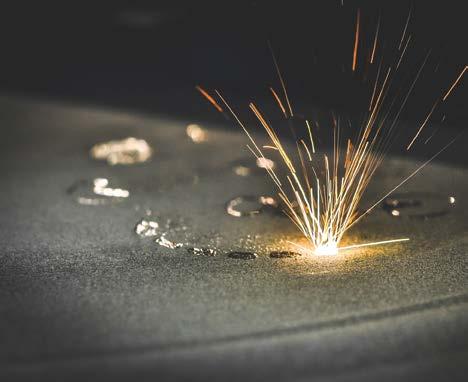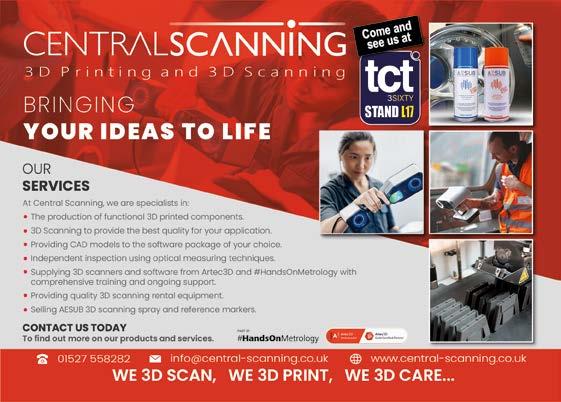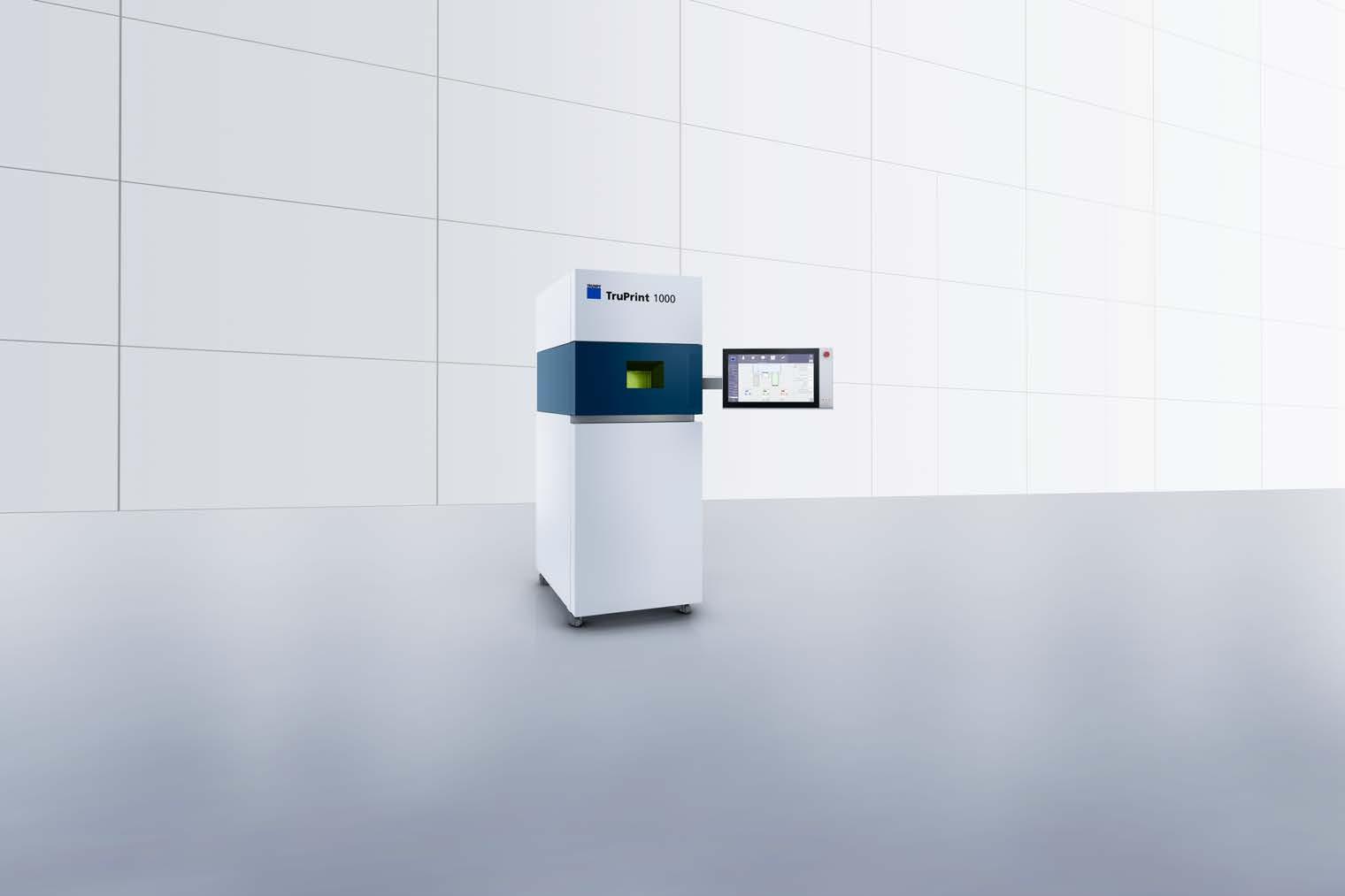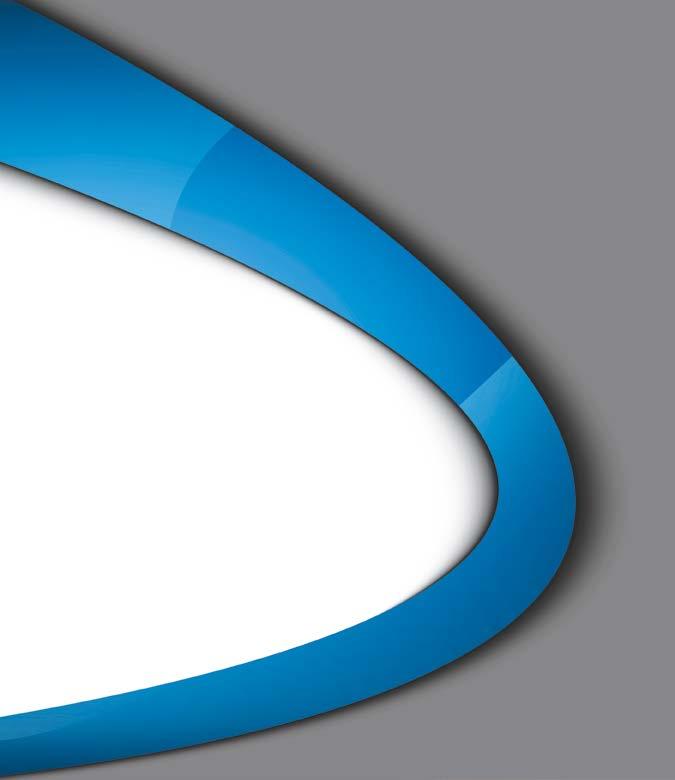
6 minute read
PARTS THE PLAY
from TCT Europe 31.3
by TCT Magazine
Meet the metal AM firms bringing proprietary technologies to market through parts as a service offerings.
Things are looking exciting,” is the conclusion reached after a near ten-minute monologue tackles the question: “What’s been going on since we last spoke… six months ago?”
At Seurat Technologies, there has been a lot to catch up on. But co-founder and CEO James DeMuth duly obliges, detailing the work being put in to define material parameters, build out production plants and fulfil orders for its customers. All this before we come to the reason TCT has grabbed 30 minutes of his time on a busy Thursday morning.
Why is Seurat bringing its proprietary metal 3D printing technology to market by selling parts rather than machines? And why are the likes of Fabric8Labs, VulcanForms and Freeform doing similar?
The four companies have all come to the attention of the ever-curious additive manufacturing community off the back of steep investment rounds and, to varying degrees, limited detail on how their technologies work. But they have all identified the same opportunities. Namely, localised production at scale, with its customers achieving quicker time to market.
“This business model provides customers with greater speed to market because we derive the process parameters in advance, eliminating iterative development, and ensuring rapid qualification and scale-up,” explains VulcanForms co-founder, President, and CEO Martin C. Feldmann.
VulcanForms is the company leveraging the largest amount of capital, having procured 355 million in venture funding during its latest financing round. Valued at over 1 billion USD, the company is vying to realise metal additive manufacturing at scale by integrating its process into a digital manufacturing system that is said to represent ‘the next generation of advanced manufacturing infrastructure.’
Emerging from an MIT lab headed by Professor John Hart, who also helped to establish Desktop Metal, VulcanForms has been working to improve the throughput and quality of metal laser powder bed fusion technology since 2015. What they are now offering to customers is a technology that delivers up to 100kW of laser power to the powder bed. Importantly, however, this technology is being supplemented with precision machining, industrial automation, a proprietary digital thread, and its in-house engineering expertise. Its facilities therefore encompass know-how across AM, heat treatment, cleaning, surface engineering, precision machining, coatings, and inspection.
“In the bigger picture, one of the greatest opportunities America has is to build a manufacturing ecosystem that leverages advanced technology and automation,” cofounder Hart says. “There is a fundamental shift in the ways manufacturers need to adapt to global supply chain challenges and the increasing demands for product design flexibility. The offshored manufacturing is not coming back in its analog form.”
The onshoring of manufacturing was also noted by Fabric8Labs as a trend it can take advantage of. That said, the Californian outfit sees its reach going far beyond the United States.
Having recently closed a 50 million USD financing round, supplementing a 19.3 million Series A round in July 2021, Fabric8Labs is bringing to market a technology that utilises electroplating and electrochemistry to form 3D structures. Combining electroplating with proprietary printhead and micro electrode array technology, Fabric8Labs is able to print fully dense 3D metal components, featuring complex geometries and resolutions of 50 microns, from a room temperature water-based feedstock.


The company also claims its Electrochhemical Additive Manufacturing (EAM) process often doesn’t require thermal post-processing steps, with parts ready to ship after rinsing, and that its technology is able to achieve significant greenhouse gas emission reductions compared with other additive processes.

“It’s a totally different process than anything that’s out there,” says Ian Winfield, VP of Product and Applications at Fabric8Labs. “Our goal is to scale it up as quickly as possible to preserve a broad set of customers. As we’re looking at that in a way that the process can be efficiently run, in a factory setting, we reached the conclusion that the best way to scale the technology would be for us to stand that up and operate it ourselves. That reduces the option of a customer potentially getting an R&D machine, playing around with it for a couple of years, and then trying to convince their internal stakeholders that they want to scale it up.”
Fabric8Labs has primarily targeted OEMs in its customer acquisition, and in its early stages was encouraged to become a tier one or tier two supplier itself, rather than sell manufacturing equipment into their supply chain. Currently, the company is building on a pilot facility in San Diego, which will service its benchmark customers and demonstrate economies at scale, before opening up a larger US facility in 2024/25.
Seurat too is in the process of building out its manufacturing footprint, with an R&D facility and pilot plant facilitated by a total funding of 79 million USD. In the next month or two, the company expects its first-generation Alpha machine based on its Area Printing technology to come online, with parameter development of Inconel 718 and M300 tool steel ongoing. Stainless steel 316L is already 'dialled in.' Area Printing utilises a pulsed infrared laser source and blue light projection to melt material, with optics technology helping to control the cooling rate on a per pixel basis. While this allows Seurat to focus on part quality, it also has a roadmap that will see its machines grow in size, speed, and resolution. While currently capable of 10 features/mm and 3.0kg/hr in a 450 x 450 x 450 mm build volume, by 2025 the aim is to be at 14 features/ mm and 30kg/hr in a 1.2 x 1.2 x 1.2m build volume.
Because of these aspirations – and there’s a target of 20 features/mm, 1,700kg/hr and 9.6 x 9.6 x 9.6m build volume by 2030 – Seurat has also decided to proceed with a business model akin to a contract manufacturer. Should it get to 2030 with machines meeting those specs, DeMuth estimates being able to deliver parts at 25 USD per kilo. And his calculations suggest a machine based on Area Printing would be setting customers back half a billion dollars to buy just one platform.
“There’s not a whole lot of customers who are going to buy a machine that big, but there’s a lot who buy parts at 25 dollars a kilo,” he says. “There’s an opportunity for all those parts in that price range to turn it more like a software company: make it quick, make it agile, make it accessible. Forget about the benefits of additive [for a second]. On a per price basis, that’s an explosion right there. But now you apply additive to it, you can get your new capabilities, your new functionality that was never possible before.”
In February, another metal 3D printing company, Freeform, announced a fund raising of 45 million USD to support its parts as a service offering. Details beyond taglines such as ‘metal 3D printing simplified’ and ‘softwaredefined autonomous factories’ are so far not forthcoming. But that a fourth company carrying such a business model, and attracting such venture capital investment, has come to market suggests there is more than just a sense of the opportunity for the contract manufacturing of metal printed parts, especially in this economic climate.
“Additive is intrinsically a flexible manufacturing technology, but we understood the need to build integrated production systems ourselves to deliver the necessary quality at scale, and provide engineered solutions to customers,” Feldmann concludes. “VulcanForms reduces friction and accelerates the adoption of AM by eliminating risk for the end user – no capital investment, no operating expense, and no need to pay for components that do not meet all specifications.”
“The decision was driven by our customers,” Fabric8Labs Founder and CEO Jeff Herman offers. “When we talked to them and they saw the potential, we asked them how they would want to use this technology. Do they want to buy a printer and embed it into their factories? In most cases, they said, 'no, what we want is parts.' The quickest path was for us to stand up the manufacturing capability.”
“What’s the rule of thumb? You need three years to become an expert in anything. They need to become experts in the machine, so they feel comfortable moving it to production,” DeMuth adds. “Our [view] is that since we fundamentally have control over what’s in the machine, we have to be the best at operating the machines. We’re teed up to say, ‘just give us more volume, and we’ll print you those parts.’ It lowers the barrier to entry because the customer doesn’t have to buy capital equipment. We take that on for them, and we just give them parts.”







